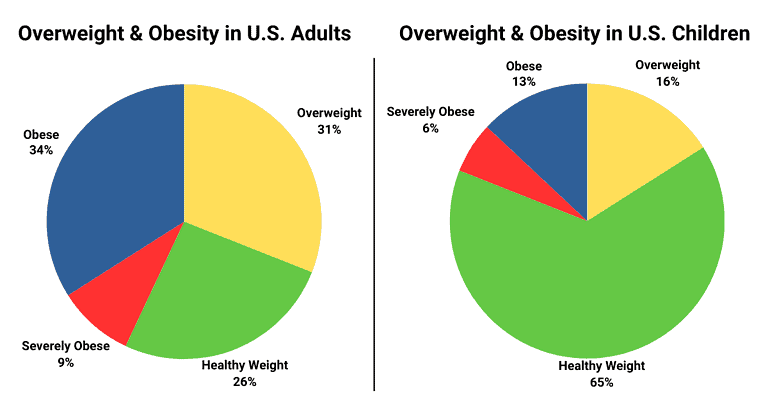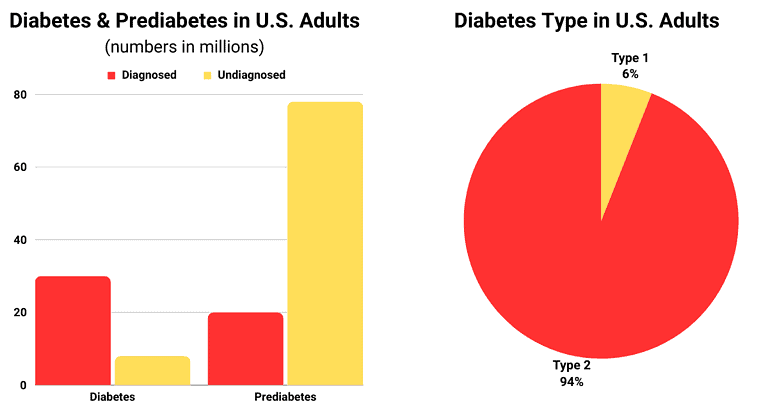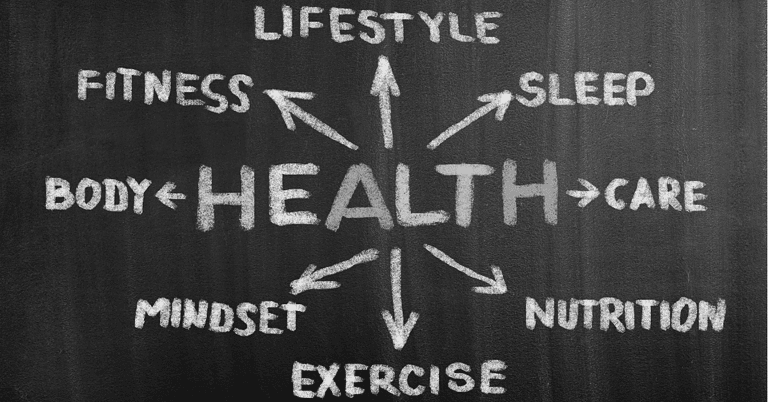Top Health Issues in America
Unless you’ve been living under a rock, it should come as no surprise to hear that many Americans are suffering with serious health issues these days. Whether it’s from increasingly sedentary lifestyles (thanks a lot “screens” and social media), the crushing effects of the Standard American Diet (with its appropriate acronym “SAD”), or any number of different overindulgences (or all of the above), Americans seem to be facing health challenges everywhere you look.
To reference a quote that I often see attributed to Zig Ziglar, “The first step in solving a problem is to recognize that it does exist.” With that in mind, let’s talk about some of the top health issues in America and take that first step of recognizing that we do in fact have a problem. And when we’re done, make sure to check out our article outlining 5 tips you can easily implement today to start improving your health and take action.
Top Health Issues in America
Obesity and Overweight
America has a weight problem. More specifically, we have an obesity and overweight problem, and it’s increasing dramatically.
Average Body Weight
According to the National Center for Health Statistics of the Centers for Disease Control (CDC), at the time of this writing the average weight for adult men in the U.S. is nearly 200 lbs (199.8 lbs) and the average weight for adult women in the U.S. is just over 170 lbs (170.8 lbs). With those numbers, the average woman today now weighs nearly as much as the average man weighed just 30 years ago. And no, there hasn’t been a dramatic increase in average height to account for this increase in average weight.
Obesity and Overweight Percentages
Again according to the CDC’s National Center for Health Statistics, 42.5% of U.S. adults have obesity, and 9% of those have severe obesity. On top of that, another 31.1% of U.S. adults are considered overweight. That puts the total number of U.S. adults who are either obese or overweight at 73.6%. Nearly 3 out of every 4 American adults are either overweight or obese!
But that’s just adults. Children are not immune to these troubling trends, and sadly we’re seeing numbers in children that are on the same negative trajectory. The CDC’s National Center for Health Statistics puts the number of U.S. children and adolescents aged 2-19 years who are obese at 19.3% with 6.1% of those having severe obesity. And again on top of that you have another 16.1% who are overweight. That puts the total number of U.S. children and adolescents who are either obese or overweight at just a bit over 35%. That’s not quite as bad as the situation with U.S. adults, but it’s a negative trend that’s increasing and it’s clearly not good.

All of these hefty numbers (pun intended) put the U.S. near the top of the list of the world’s most obese countries, which isn’t exactly something to cheer and chant “USA” over. And the reality is that this is about more than just numbers because people who are overweight or obese have an increased risk for a number of different chronic diseases and health issues like heart disease, diabetes, cancer, and mental illness just to name a few.
Diabetes
Another troubling trend we’re seeing in the U.S. is an increase in the incidence of diabetes, which is a chronic health condition involving a person’s production of or sensitivity to the hormone insulin and how that affects the amount of sugar in the bloodstream. There are two main kinds of diabetes, Type 1 and Type 2.
Type 1 diabetes is believed to be the result of an autoimmune condition that causes a person’s body to stop making insulin. With Type 2 diabetes a person’s body becomes resistant to insulin and doesn’t use it well. In either case, the body’s issue with insulin causes a buildup of sugar in the bloodstream.
Type 2 diabetes develops over time and is believed to be primarily caused by lifestyle factors. The vast majority of people in America who have diabetes have Type 2 diabetes (more than 90%).
Diabetes can lead to other serious health problems like heart disease, kidney disease, nerve damage, and vision loss. In fact, the CDC notes that diabetes is the leading cause of kidney failure, lower-limb amputations, and adult blindness. Not to mention diabetes is the eighth leading cause of death in the United States. Scary stuff!
And we also see a correlation between diabetes and obesity / overweight with stats showing that among US adults aged 18 years or older with diagnosed diabetes about 90% were overweight or had obesity.
Diabetes in Adults
According to the CDC’s National Diabetes Statistics Report, nearly 30 million people of all ages (but almost entirely adults) have been diagnosed with diabetes. That’s certainly a big number, but it gets even worse when you consider that estimates show there are an additional 8-9 million people who have diabetes and don’t know it or haven’t been diagnosed. That puts the total number of people in the U.S. who have diabetes at about 38 million, or nearly 12% of the population. But wait, there’s more…
We also have to take into account “prediabetes” which is a health condition where a person has blood sugar levels higher than normal, but not yet high enough to be diagnosed as Type 2 diabetes. So essentially a person who has prediabetes is, as the name suggests, on his or her way to having Type 2 diabetes. The CDC estimates that about 98 million American adults have prediabetes and more than 80% of them don’t even know it. That’s all very concerning when you realize that prediabetes not only increases a person’s chance of developing Type 2 diabetes, but it also increases a person’s risk of developing other health issues like heart disease and stroke.

If you’re keeping track, we’re now at a grand total of 136 million American adults who have either diabetes or prediabetes (38 million with diabetes and 98 million with prediabetes). That’s more than 40% of the U.S. population!
Diabetes in Children
I mentioned earlier that the nearly 30 million people of all ages who have been diagnosed with diabetes consists almost entirely of adults. That’s true when we’re looking at it in terms of percentages, but that doesn’t mean that children don’t have diabetes.
Children and adolescents under age 20 account for about 352,000 of that nearly 30 million cases of diagnosed diabetes. For children and adolescents, the vast majority (86%) have Type 1 diabetes with only 14% having a diagnosis of Type 2 diabetes. Unfortunately, the incidence of both Type 1 and Type 2 diabetes is increasing significantly in children and adolescents with Type 2 generally seeing a much steeper rate of increase. Not surprisingly, the increase in childhood diabetes is going hand in hand with the increase in childhood obesity noted above.
Comparing that with adults aged 20 or older, not only is the total number of people with diagnosed diabetes significantly larger, but the relationship between Type 1 and Type 2 diabetes is reversed. The total number of adults aged 20 or older with diagnosed diabetes exceeds the number of children and adolescents with diagnosed diabetes by about 29 million (29,348,000). And of those adults with diagnosed diabetes, only about 6% had a Type 1 diagnosis with the remaining 94% having Type 2 diabetes.
Heart Disease
You may have heard heart disease referred to as the number 1 killer in America, and it is in fact the leading cause of death for pretty much any group in the U.S. that you can think of (men, women, different racial groups, etc.)
So what exactly is heart disease? Heart disease is a sort of umbrella term that covers several different health conditions related to the heart. In the United States, Coronary Artery Disease (or CAD) is the most common type of heart disease and accounts for more than half of the deaths resulting from heart disease. With CAD, plaque builds up in the walls of the arteries that supply blood to the heart which causes them to narrow over time. This narrowing of the arteries can block the flow of blood either partially or completely, and when the heart doesn’t get enough blood a person can experience a heart attack. Over time, CAD can ultimately weaken the heart muscle and lead to heart failure.
According to 2021 statistics provided by the CDC and the American Heart Association, one person dies of heart disease every 33 seconds with about 695,000 people dying from heart disease for the year (which accounted for 1 in every 5 American deaths). With that in mind, about the last thing anyone needs is multiple paths to heart disease.
Unfortunately, multiple paths to heart disease is exactly what Americans are facing. As mentioned earlier, overweight and obesity can put a person at an increased risk for both diabetes and heart disease. Diabetes can also lead to the development of heart disease. And obesity and diabetes can also lead to high blood pressure (hypertension), which in turn can lead to… you guessed it… heart disease. In fact, obesity, diabetes, and heart disease appear to be intertwined in many ways and share risk factors like unhealthy eating and low physical activity.
Conclusion
These are by no means the only health issues Americans face. We could talk about other concerns like cancer and mental health just to name a couple. But to me, these three issues (obesity, diabetes, and heart disease) seem like the best place to start. These are conditions that can not only lead to death but can have a significant impact on a person’s overall health and quality of life while they’re living. These are also issues that are preventable in large part and we are empowered to take action against by making some relatively simple lifestyle changes to things like our activity level and how we eat. With that in mind, don’t forget to check out our article outlining 5 tips you can easily implement today to take action and start improving your health.







